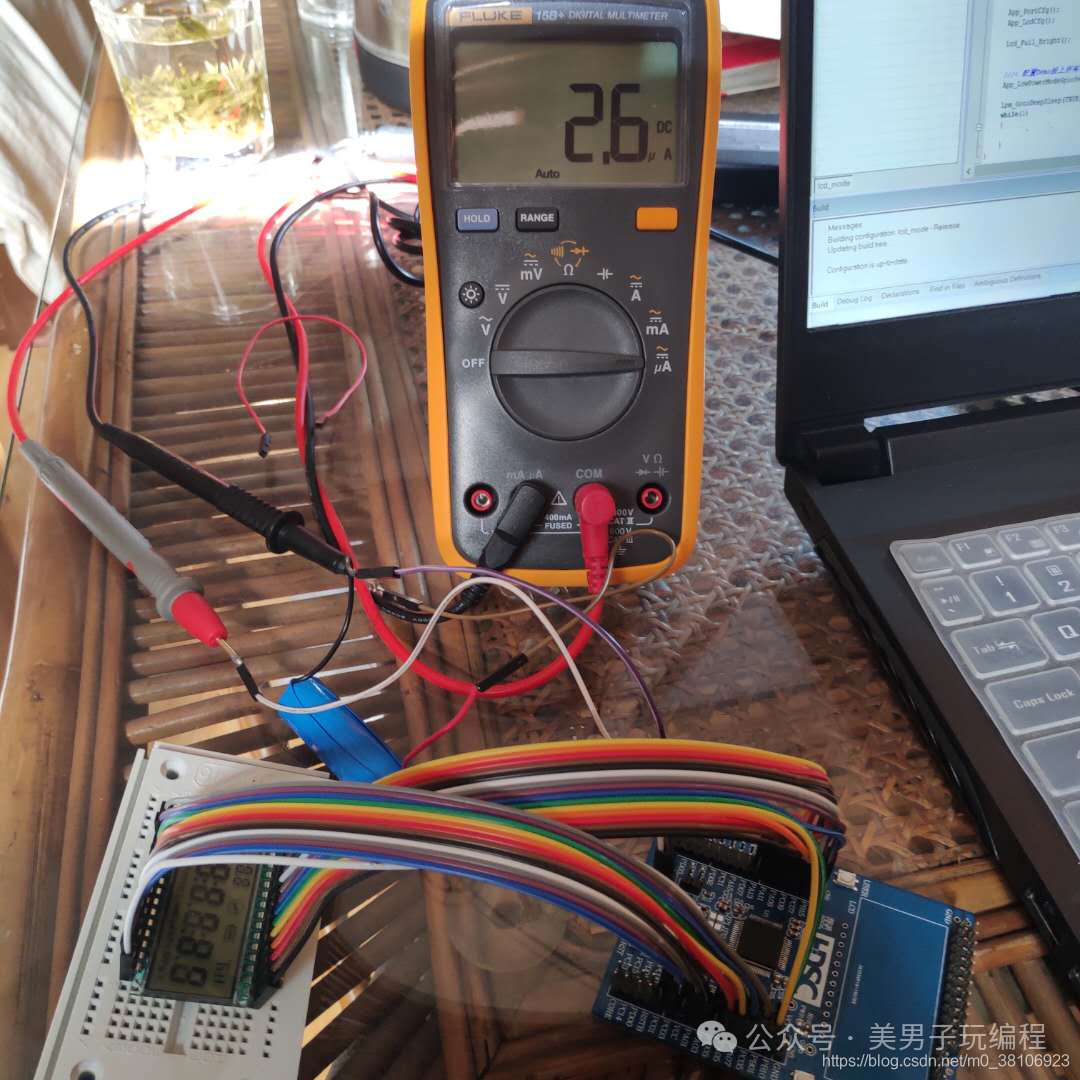
Click the above blue text to follow us
μA-level power consumption refers to a system that consumes only microampere-level current during normal operation or idle state. Typically, both static power consumption (sleep or idle mode) and dynamic power consumption (active mode) are strictly controlled.

For example, a system may consume only 0.5μA in deep sleep mode and 200μA during measurement. This low power consumption is crucial for battery-powered devices.
The sleep mode is the core mechanism for microcontrollers to reduce power consumption, allowing the system to enter a low-power state when inactive. By optimizing the sleep mode, μA-level power consumption can be achieved.
Microcontrollers typically offer several sleep modes:
- Light Sleep: The CPU is paused, peripherals and memory remain active, and wake-up time is extremely short (microsecond level).
- Deep Sleep: The CPU and most peripherals are turned off, while some peripherals can remain active, and wake-up time is longer (millisecond level).
- Hibernate: The system is completely off, retaining only a small amount of memory state, and wake-up requires reinitialization (second level).
For instance, the STM32L4 has a power consumption as low as 0.14μA in deep sleep mode.
Power consumption can be optimized in the following ways:
- Turn off the power to unused circuit blocks to reduce leakage current. Consider wake-up time and standby leakage current. For example, turning off unused ADC modules can save tens of μA.
- Stop the clock signals of unused circuits to reduce dynamic power consumption. Modern microcontrollers automatically support clock gating, and software can also control it manually.
- Adjust CPU voltage and frequency based on workload. For example, reduce frequency to 8MHz and voltage to 1.8V under low load.
- Monitor chip performance and temperature in real-time, dynamically adjusting voltage, which can save about 55% power compared to DVFS (AVS technology).
- Use timers or sensor interrupts to wake the system. For example, the RTC timer wakes the system every 10 minutes for measurement.
Previously, I worked on a project designing a battery-powered environmental monitor that records temperature and humidity every 10 minutes and transmits data wirelessly daily, needing to run on a 1000mAh battery for at least a year.
Here is the implementation of deep sleep mode based on the STM32 microcontroller:
#include "stm32f4xx.h"
void measure_data(void) { // Read SHT30 data // Pseudo code read_sht30();}
void store_data(void) { // Store to Flash // Pseudo code write_to_flash();}
void enter_deep_sleep(void) { RTC->WKUP = 600; // 10 minutes SCB->SCR |= SCB_SCR_SLEEPDEEP_Msk; __WFI();}
int main(void) { // Initialize RTC, SHT30, nRF24L01 while (1) { measure_data(); store_data(); enter_deep_sleep(); }}Achieving μA-level power consumption requires a comprehensive strategy from sensor selection to sleep mode optimization. Choosing low-power sensors (like SHT30) and optimizing sleep modes (such as power gating and AVS) can significantly extend battery life.
Considering power consumption in the early design phase, combined with hardware and software optimizations, engineers can create efficient, energy-saving embedded systems. Every μA is crucial, and continuous iteration will yield the best results.

 Click to read the original text for more exciting content~
Click to read the original text for more exciting content~